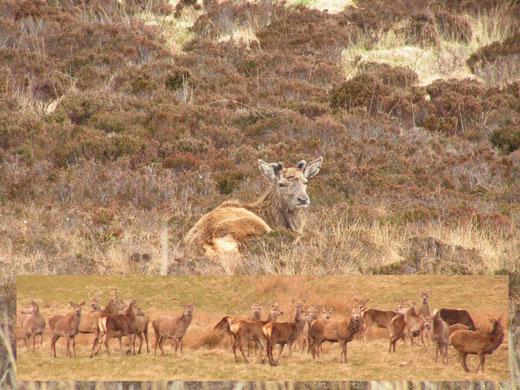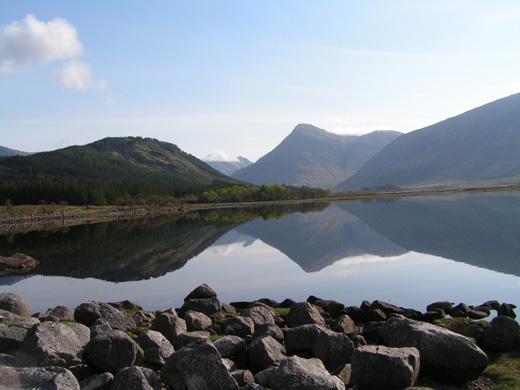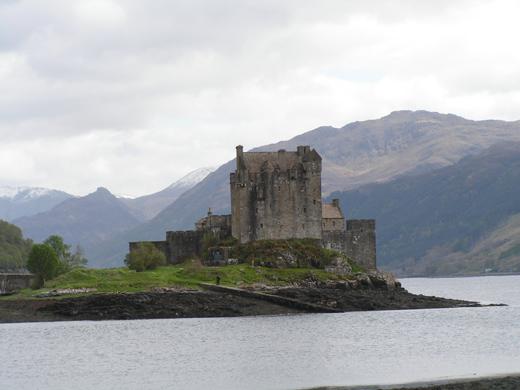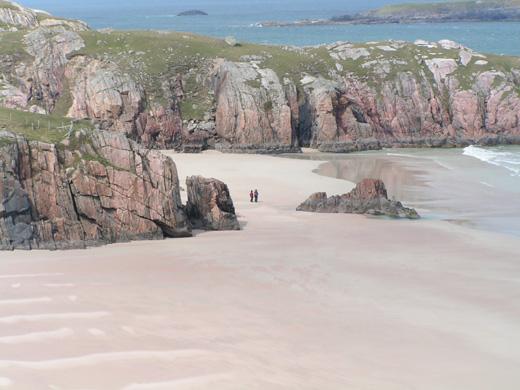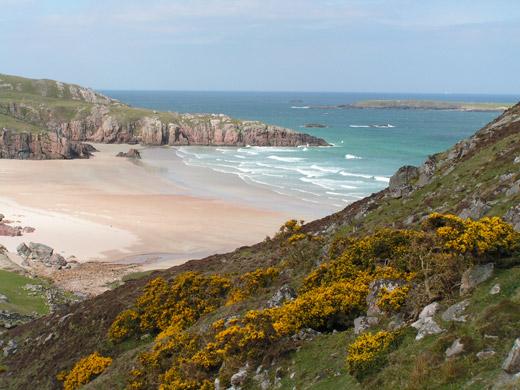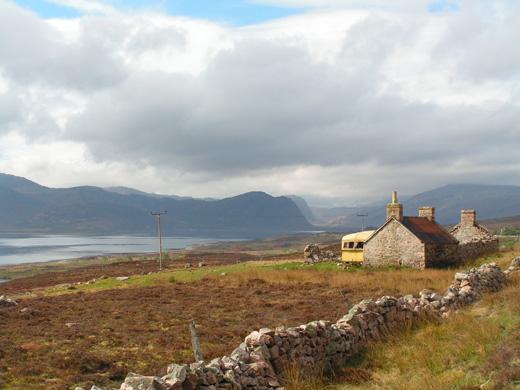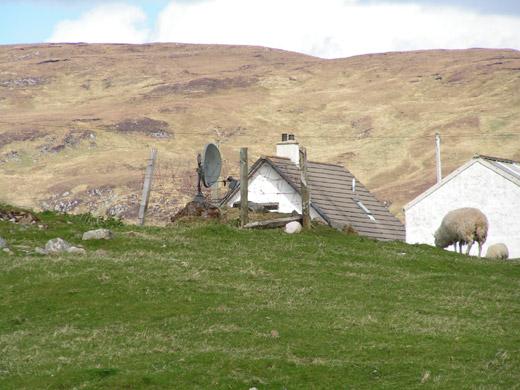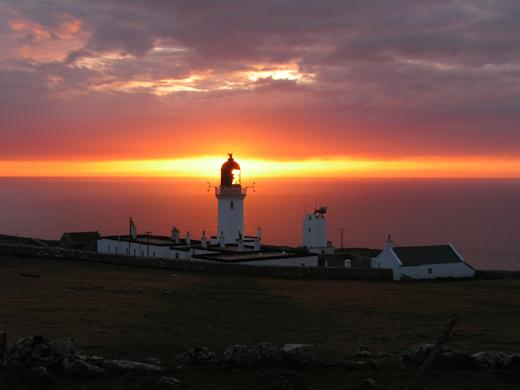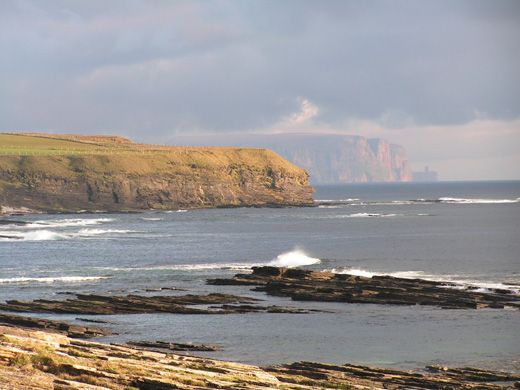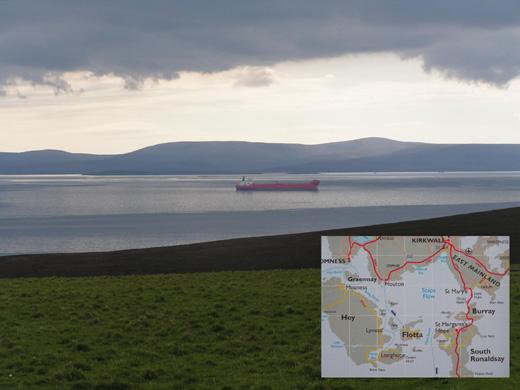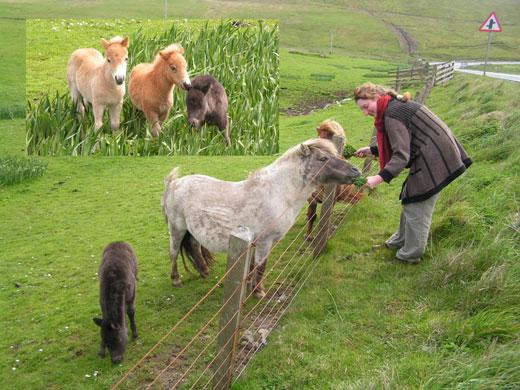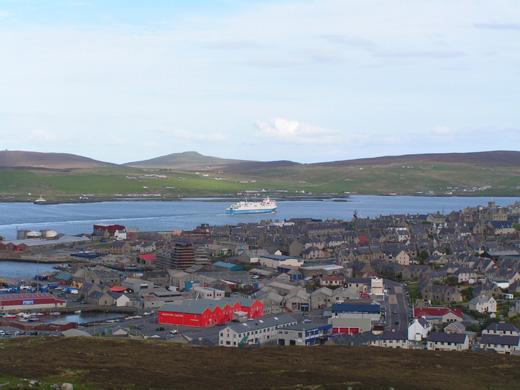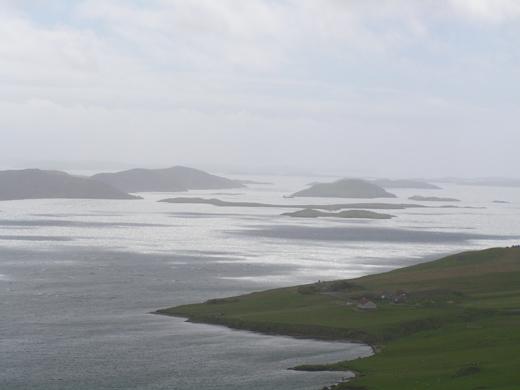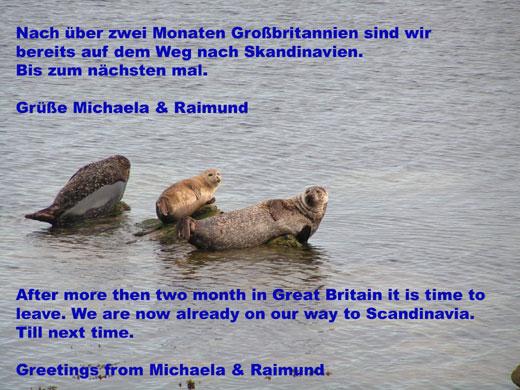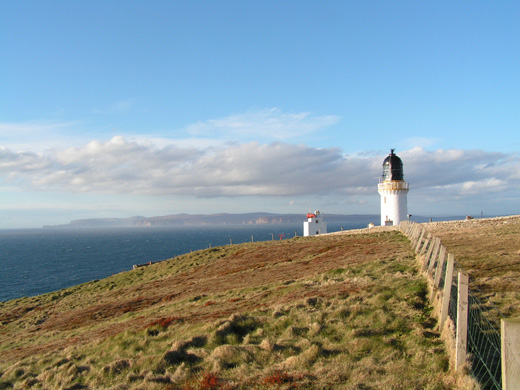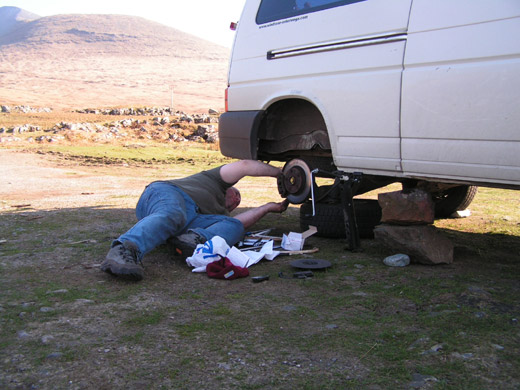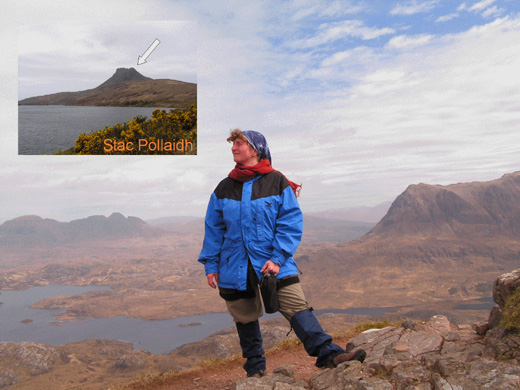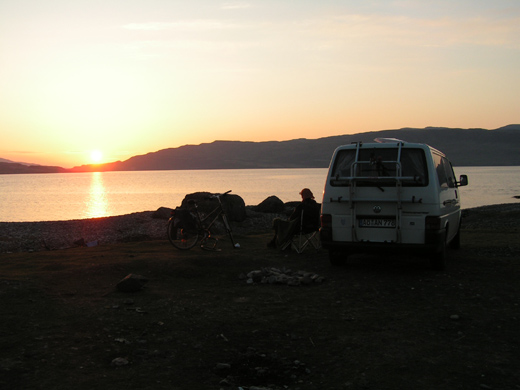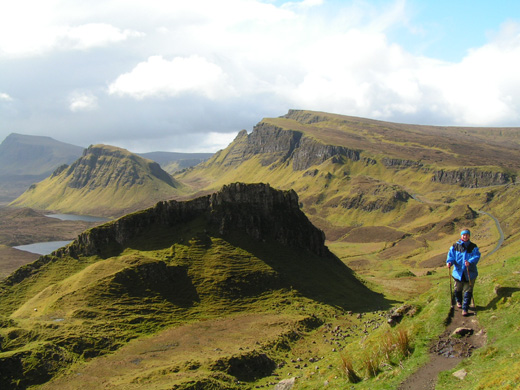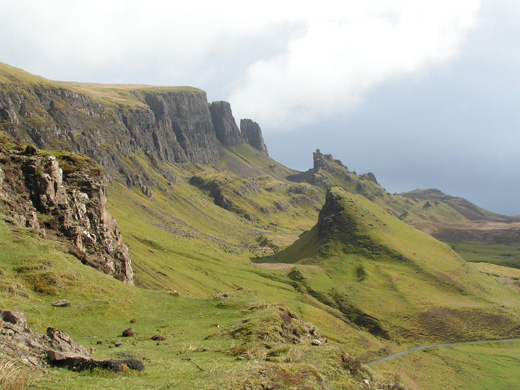As well two travellers which are having a break on the motorway
Monthly Archives: May 2005
Internet
Everywhere in Great Britain, in the smallest town or the most remoted island it is possible to let yourself register in a library. Once you done that, you have internetaccess, average one hour per day. That was an idea of the government of GB and sponsored by the Lotteriefund. For a comparison> in the few internet cafes you pay an average of 6 Euros per hour.
Route: East coast of Scotland – North-West Scotland – Orkney Islands – Shetland Islands
This country is to beautiful that we don´t want to bother ourselves to work here and in the moment we still have time and a bit of money to do without.
see picture in German Version … as well the East coast of Scotland has it´s appeal
After one week at the East coast we are longing for the peace and tranquillity as well the beauty of the Northwest coast of Scotland.
A lot of animals which are already extinct in Germany we can watch here from a very short distance. For example deer. On our last holidays here in Scotland we came back from a trekking tour and saw right in front of our car a herd from about 50 of them. Since they were separated from us through a fence, we thought: ok that’s a deer breed. But a few days ago we chatted with a forester and he explaint to us that the fence is there to protect the villages from the deer. They would otherwise eat all the new planted trees. So you can see lots of Deer grit instead of cattle grids (which we already explained in our last travel journal. If we count just the deer, which we have seen the last 6 weeks we definitely come more then over a thousand without exaggeration.!! ( I know I personally do sometimes exaggerations, but God thanks Raimund is the opposite). So therefore, you can trust me. The forester told further on that the deer in this area can be a real nuisance. Unfortunately you can’t do so much against it, since the Highlands are a wetland and therefore they are out of sight quiet quick. We certainly being only “watchers” appreciate it a lot to watch them in big herds.
Then there is here the world of birds. Species which you can´t look at them anymore or died out, like the Tetrao urogallus (latin, I could not find the English word for it), the cuckoo, the peewit, the Somateria mollissima (latin, same thing) and so on. Here we can see them in droves. Every time we pitch camp for the night, a cuckoo is greeting us.
Raimund assert that this cuckoo is always the same and he travel’s with us already through whole Great Britain (?). In a way we became already a kind of birdwatcher, even if we have instead of this huge monsters (they look like canons) just a tiny binocular. But it does it´s job.
When we are telling about our past travels to Scotland, people are always asking us: „And how do you cope with the food“ Honestly to say, we don´t. As we all know, food in Great Britain is a lot of fast-food and deep-fried. Even the best scampi’s are coming deep-fried! But if somebody like we, would like to see the world with not much money, then there is anyway no question about going into a restaurant or even into a pub. (In the pubs you get so called Pub food which is the smaller version of a restaurant food but never the less the price for German standards are quiet high: 7,50 Euro for a kind of starter and up to 25 Euro for the main course). Some of the Scottish dishes we still would like to mention. Haggis which is minced innards of a sheep mixed with oats, the Scottish National dish. It tastes much better as it sounds, to be honest we love it! As well the dishes made from deer are fantastic. Very tender, nicely spiced and not even deep-fried!! After a Scottish dinner it is certainly a must to have a glass of one of their hundreds of good Single Malt Whisky’s
But through the years we already noticed quiet a change in the cuisine as well in the food stores. A few years ago you could not buy any other bread then this wobbly white and brown toast (sorry our dear English friends, but we do love our good black bread from Germany). But know you can already buy so called French sticks which is really tasting like French baguettes. Well and yesterday by coincidence we saw a counter where you could taste “German bread” and it was not just looking like German bread, it tasted nearly like our bread at home. But unfortunately they had no stock of this bread, it was just that people could taste it. Strange sales strategy.
Now to our further on route. Like we mentioned already, we did drive again back to the North-West, where there is not just the beautiful mountain range, as well you can find here on a sunny day, beaches like in the South Pacific or in the Caribbean Sea. Just the temperature is a bit lower.
On such places we certainly stay for a longer period.
Then the street leads us passed deserted villages and farmhouses.
So more we come to the East again, the countryside is much more densely populated.
Once in Thurso, the first bigger town since a week, we have to fill up our grocery stock. Since one or two years Germany has landed in Great Britain: A Lidl Supermarket. We do not want to make any advertisement but compare to the other supermarket chains we can save lot´s of money going shopping at Lidl. For example vegetables and fruits are half the prize if you buy them on a Friday or Saturday. But even the rest of the food, drinks and even toiletries is much cheaper. A lot of the stuff is coming all the way from Germany. For example the Mozzarella cheese. In another supermarket chain the price for mozzarella is about 1,30 Scottish Pounds, at Lidl you get it for 0,69 Scottish Pound. As we had a closer look onto the back of the package we were quiet astonished. It was produced in Cham in Upper palatinate/ Bavaria.
This are now our last days on the mainland in Scotland. At the lighthouse at Dunnethead, where we have already been 3 weeks ago, we pitch our camp.
The last time we where here, we saw the Orkney Islands just from a distance. Now, better to say at the next day, we take the ferry to the Orkney Islands. The sea swings the old ferryboat in about 1 ½ hours into the save harbour of St. Margaret´s Harbour. After just half an hour on the islands we realize that we are now in a complete new surrounding. Nothing like the Scottish Highlands, just wide green farmland with lots of cattle and sheep. From nearly every point of the island you have eye contact to the sea. In the west of Orkney it is a bit more hilly and there are even cliffs.
The Orkney Islands and especially the bay of Scapa Flow are a paradise for wreck divers. In both world wars the islands have been the scene for war historical events with German participation. The high sea fleet of the German empire, at that time the second biggest after the British one, have been intern in November 1918 in the home harbour of the British navy Scapa Flow. The ships have been disarmed and been controlled by the British. Just an emergency crew of sailors were on all of the 70 German ships. On the 21st of June 1919 after the British navy set out for a manoeuvre in the North sea, the commanding officer of the intern unit, Konteradmiral Ludwig von Reuter, gave the command to sink there own ships. He presumed that the German Government would not accept the peace treaty and the hostility would continue next day. As the British navy returned from the manoeuvre the bay of Scapa flow was a “sea of rubble”. In the 2nd World war, lieutenant-commander Günter Priem did the impossible. He managed to come in one of the two access into Scapa Flow with the submarine U-47 unnoticed and sank the warship HMS Royal Oak with 1400 crew on it. At the Cathedral of Kirkwall we found a commemorative plaque which commemorates 880 sailors, which have been drowned. Most of the wrecks of the sunken ships have been elevated, but still there are a few on the bottom of the sea. Divers from all over the world love this diving ground
We go further to the North, to the Shetland Islands (60. latitude) This islands are half way between Scotland and Norway and exists of about hundred islands with 22 000 inhabitants and 330 000 sheep.
This time it is a night trip. At 11.15 pm we enter the ferry. After we have set up our night camp, we go once more outside to the rail to get some fresh sea air. It is already 0.10 am and still not dark, infect it is still twilight. The duration from the Orkney to the Shetland Islands lasts 7 ¾ hours. The rhythmical noise of the ship puts us to sleep on the relatively comfortable sleep chairs, which are looking kind of cinema chairs. Shortly before 7.00 am a voice from the loudspeaker wakes us up. “In half an hour we will arrive Lerwick“ After checkout we drive to a nearby hill, have breakfast and get the first impressions about Lerwick and the Shetland Islands.
For the next days we prepare our travel route.
Today we drive to the most westerly points of Shetland Mainland, where we pitch a camp right next to the Lighthouse. We have a terrific view over the sea. The wind gets stronger. After a careful consideration we decide to try to find a bit more secured spot for the night. During the night it starts to rain. I am half asleep as I hear Michaela: “Oh my God… we are standing with our bus right in the middle of a creek”. There, were six hours ago still was dry ground, is now a small river. But fortunately the ground is quiet hard, so we have no problems to bring our bus back onto the road. The wind and the rain are becoming quiet strong. You even can see the rain walls which the wind carries around. We stay in the bus and read and look at movies which we can watch on our laptop and which we brought with us along for this “extreme sunny days”
During the next days it gets colder. Temperature is around 4 ° – 7° C. The stationary heating is mostly on duty. In the evening we hear on the world radio the temperatures in Germany “ Hamburg 31° C, Frankfurt 30 ° C und Munich 28 ° C “. In that moment we think we must be nuts. The weather unfortunately is not changing to better for the next two days. Therefore we decide in the morning to go back to Lerwick. There is an indoor swimming pool where we relax in the whirlpool and our mind is in Germany with sunny temperatures.
Route: North-West Scotland
Highlands and Islands
Delicacies from home. The Bavarian smoked ham, the Leberkäse (translates into livercheese – but there is no liver and no cheese in it, a kind of meat loaf), cheese-sausages and Pretzels from Bavaria are a real rarity here at Dunnet Head, the most northerly point of Scotland mainland and a treat for us. The first care package from home have arrived after we had to “suffer” 8 weeks without this “very important Bavarian groceries”. From Dunnet Head we have a terrific view over to the Isles of Orkney, which the sun turns them into golden light.
We drive to Thurso, where we get some more groceries and petrol for about a week. In front of us are now the North-West Highlands. The next bigger town is Ullapool and this is about 160 miles away and lies in the West of Scotland. Between Thurso and Ullapool the surrounding is mostly deserted countryside. The small villages are never more then a dozen of houses. After the “Clearance” beginning of the 19 century, the population never came back. It was in the winter 1819 in the near of the mountain Ben Hope, where following tragedy took place: The landowner decided, to expel over hundred young tenants. They were brought against their will onto ships leaving to Ontario/ Canada. After the ship have left, it sank in a storm and it is said that nobody on the ship survived. Meanwhile the houses of the tenants got destroyed by the landowner, to take the stones and rocks as building material for streets. Even today, nearly nobody is leaving in this stretch between Thurso and Ullapool. Our journey through the North-West Highlands is as well a journey through our own past. We take the same route, as we did 10 years ago, the first time visiting Scotland. On some places we even can remember the exact place, where our tent stood.
Here in the North-West of Scotland you find one of the last nature paradise in Europe. The streets follow along Lochs (Loch is the word, which in Scotland means lake or sea arm) and through peaceful mountain ranges. The Scot’s are very nature loving people and do have some exceptional hobbies, at least from the view of a mainland European. For example the “Munro-bagging” or the “rain-watching”.
Munro-bagging: “Munro” is the magic word witch let the hearts beat quicker of every Scotsman. The name derives from the Scotsman, Sir Hugh T Munro, who in 1896 have listed all mountains in Scotland which are higher then 3000 feet and from this there are more then 277 Munro-mountains. In the year 1890, people still believed that there are no more then 30 mountains of this height. Munro-bagging is the official word for this obsession, is a part of every mountain climbers live. Children, pensioners, whole families together with their dogs did do the whole round of Munro-bagging. Then there are more then hundred thousands of bird-watchers and last but not least the so called rain-watcher, which just wait till the next depression comes. Then there are out in nature and they list all the different kind of rainfalls they see, with time, place and so on. There are rainfalls which they just have seen twice in the last 40 years. There are already Clubs of rain watchers.
We are happy, when we can not see one or the other rain admirer, since we know then, that we will have good weather. We are in the spell of hiking the Munros. In the near of the village Achiltibuie, which houses by the way the biggest back piper school in Scotland, we meet an old friend of us, named Stac Pollaidh. This is a mountain with a extraordinary jagged summit, which we have hiked already ten years ago. From the peak you have a breathtaking view over the old mountains of Caledonien.
After one week through the Highlands, we reach Ullapool and first of all we are longing for a hot shower. Our ongoing travel leads us to the remoted world of Islands of the Inner Hebrides.
Scotland is surrounded by 790 islands, from which just 130 are inhabitat. To the Islands here in the West you come with the ferries of the company Caledonien Mac Brayne. Most of the islands you ca reach throughout the year, just the smaller and most remoted islands only during the summer month. On the islands as well then on the west coast of Scotland Gaelic is spoken. Like the Welsh Gaelic the Scottish Gaelic is part of the very old Celtic language.
Scotland’s islands have fascinated us, only the dispose of the refuse and sewage of the islands have shocked us. From broken cars over fridge and freezers you can find everything on some of the nicest places and viewpoints.
Our next story leads us to the Isle of Mull.
Sheep, lambs, sheep, lambs. It is incredible how many white spots you recognise on the surrounding hills, the fields and even on the streets. Most of the sheep have a life like in paradise. When they are in their “childhood” they let them go with their Mummies. Means, they are not tied to fields surrounded by fences. The territory of them goes from one Cattle-grid to the next. Such a territory is very often as long as a valley (glen), from approximately 15 miles. A quiet funny encounter with sheep we had on the Isle of Mull. We found a terrific place to stay at the Loch na Keal, directly at the seaside. The weather is sunny and warm. Apart from us just sheep. That is exactly the right place and weather to do a “General cleaning” and let some air in the bus. As we are in process of our “General cleaning”, we hear a van which sounds the horn continuously. We wonder what that is. Suddenly all the sheep from miles away, start to run direction the van. Määäh Maäääh, The van stops, a farmer steps out and pick up a blue plastic bag. In this bag, you guessed already, is additional food for the sheep, to which –it seems like this – they are kind of addicted to it. This is now the prior story to it. Next day – we decided to stay here for a few days – about the same time there is again movement in the sheep. Ah, that must be the farmer coming again, we think. But we can not hear the horn. Well, maybe the sheep have a better hearing for it. Well, here the white van comes – oh no it is a white camper. All the sheep are running direction the camper, määäh, it seems that somebody is behind them. A look into the face of the driver tells us, he don´t know how to deal with that. Wasn’t it like this that sheep are peaceful and shy. But this is not looking like all like this. He starts to hunk the horn. Well he better would have stayed away from this. Now they are even closer around the camper and the driver is already sweating. He stops the camper and waits. Somehow the leader sheep got the point, that this is not the farmer they were waiting for and he start to bleat one short sharp time and up they go away and the camper is free! Raimund and I are looking at each other and certainly start laughing. Well this was to early to laugh about! I make myself ready to brush my teeth but just outside of the bus I realize that it is a bit brisk. So I put on my blue anorak. Well, you guessed it already. Blue colour – sounds a bit like plastic. „There is our farmer with our additional food and all the time we have not realized him standing there” A short and sharp Määäh from the leading sheep, attention, and all are running towards myself. In the first moment I start to think, what have I done wrong, sheep are peaceful, then I realize and I start laughing. But this doesn’t stop them at all. Meanwhile there are about 50 sheep around me and bleat like hell. What shall I do know? Well I have to inform them somehow, that I am not the farmer, they are waiting for. I start, in German certainly, till Raimund shouts through the closed door of the bus, laughing wildly“ They can not understand you, they are English speaking“ Ok I try it in English and suddenly the leader sheep moves his head like he would think: Does our farmer now pull my leg or is it really not him. Then the well known short and sharp bleat, he turns around and all the others as well. I am still standing in front of the bus with my toothbrush while Raimund can´t stop laughing, while sitting in the bus.
If the sheep did just understood me as I spoke in English to him, I don´t know, but I would really like to know what kind of additional food the farmer gives to his sheep!!
We are already on the Isle of Skye, the biggest island of the Inner Hebrides. The first thing we do, is to listen to a CD of Runrig. Skye is the home of the Scottish rock group Runrig. The musicians understand it excellent to mix folklore music with good rock. All their music and lyrics are written by themselves and a big part of the songs they sing in Gaelic. The fans are not just to be found in Great Britain, they are all over Europe .Most of their concerts are sold out already month before it take place. Last year we came especially over to Scotland to a concert of them in the near of Aberdeen (East coat of Scotland). Last month they had a concert in Regensburg, where we used to live. Great, now because we are gone!
Back to the Isle of Skye. It is a fantastic territory for hikers and climbers. The Trotternish-Range in the North-East of the Island invites to come here for climbing and hiking.
It is hard to describe with words the fascination of the nature here on Isle of Skye. As well the mountains in the south called “The Cuillins” are as awesome as in the North. We already are in the second week of May and we had good luck with the weather. Skye is known to more rainy and brisk days. During the day, the weather was quiet warm, just on our last day on the Isle of Skye we needed again our stationary heating. Next morning we couldn’t believe our eyes. There was snow on all the mountains on Skye and even on the peeks of the peninsula of Applecross.
Well this was it for know. We have to leave Skye, since a new care package is waiting for us at the post-office in Onich.
Bye Bye
Michaela and Raimund

